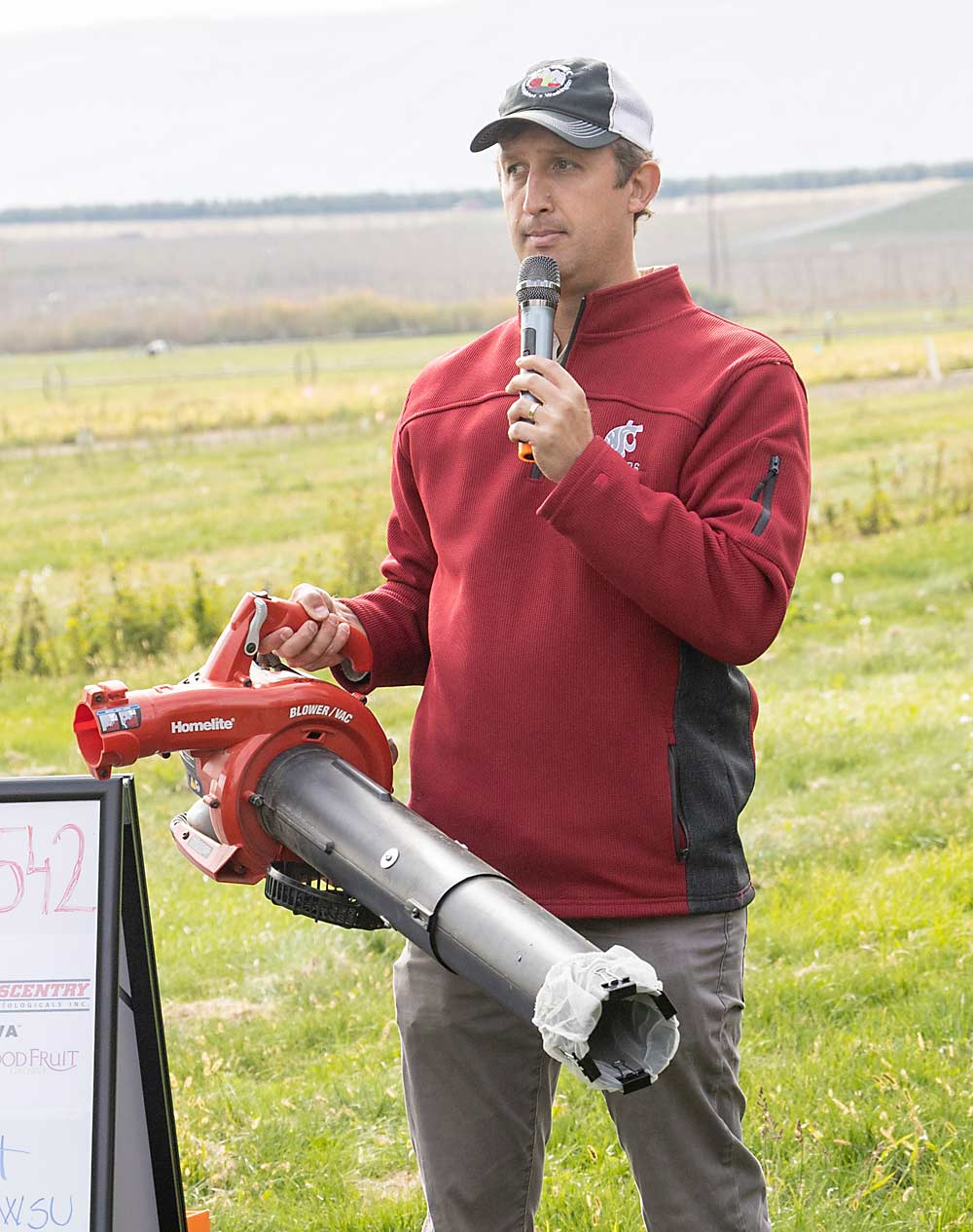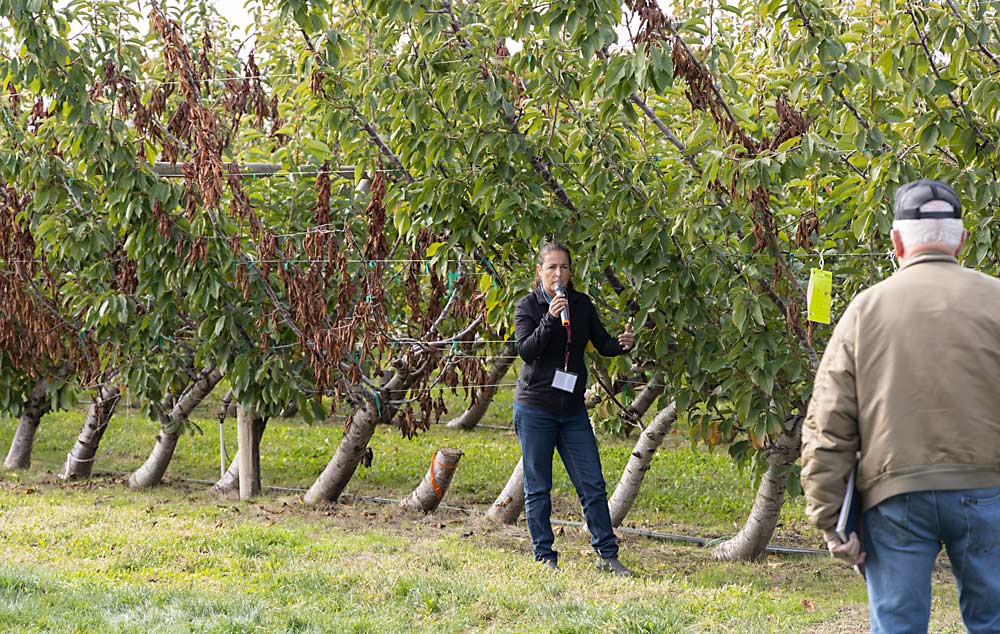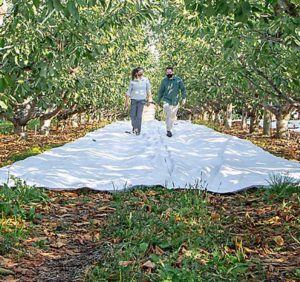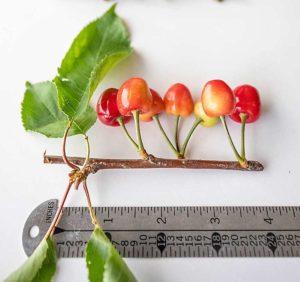
While cherry season is long over, it’s still leafhopper season in Northwest cherry orchards.
That’s why Washington State University researchers held two early October field days to share updates on the current management recommendations and ongoing research into control of the leafhoppers that are vectors of the X disease phytoplasma. Trees infected with the pathogen develop little cherry disease, resulting in unmarketable fruit.
Leafhopper management focuses on the postharvest period, said Jeff Sample, an agronomist with Bleyhl Farm Service who works with WSU’s Roza research farm in Prosser. That’s because both the leafhopper populations and the level of the pathogen in the trees rises as the season progresses.
“Postharvest, I put traps out here at the Roza and they just lit up like crazy,” Sample told attendees at a field day on Oct. 8. After the first pesticide application of Grizzly Too (lambda-cyhalothrin), the trap counts zeroed out, but only for a couple of weeks. The program continued with Nuprid (imidacloprid), another round of Grizzly, malathion and another Nuprid. “It’s been low levels, one or three per week, but it’s been consistent since then,” he said.
That sort of low pressure wouldn’t be a problem for a regular pest, but for a disease vector, it’s still concerning. That’s why WSU entomologists are focusing some of their research on deterring the leafhoppers instead of killing them.
“If it’s (the leafhopper) got the phytoplasma and feeds on the tree and then dies, it might be too late,” to stop transmission, said Tobin Northfield, a WSU entomologist who leads the Little Cherry Task Force.
Unlike obligate orchard pests such as pear psylla or codling moth, the leafhoppers don’t necessarily focus their feeding on cherry trees. “They are like a toddler at a buffet line, just wandering around shoving food in their mouths,” Northfield said. Deterrents, such as spraying kaolin clay or other particle films on the cherry trees, show a lot of promise in reducing leafhopper feeding in cherry blocks.
The other key issue is perennial weeds such as clover, dandelion, alfalfa and mallow, Northfield said.
Leafhoppers love these plants, which can act as reservoirs for the X phytoplasma from year to year. Research over the past two seasons has shown that removing access to those weeds — by covering them with reflective groundcover after harvest — reduces leafhopper presence in orchards by about 90 percent, he said.
Other ways to control weeds would likely reduce the threat of leafhoppers as well.
“Our observations suggest that solid grass cover is a terrible place for leafhoppers, so it’s good for us,” Northfield added.
WSU Extension’s Corina Serban and Bernardita Sallato also shared updates on best strategies for removing infected trees and introduced a new research effort underway to see which approaches to replanting offer growers the most worthwhile risk mitigation.

There are lots of ways to remove infected trees, but WSU recommends applying herbicide to chainsaw wounds — either to stumps or notches cut for the herbicide application — to make sure the roots die and also determine if root-grafting is present and could have passed the pathogen to neighboring trees, as those trees will show telltale signs of herbicide injury as well.
Sallato said she favors leaving a leader on the trees that need to be removed, so that the tree continues to move water and nutrients and glyphosate through its root system. Then you also get the satisfaction in the next few weeks of being sure the glyphosate worked and the tree is completely dead, Serban added.
But in the small trial they showed field day attendees, even a stump cut where herbicide was applied carried enough glyphosate to its roots to kill its root-grafted neighbor.
And while it’s important to study the role of root-based transmission and the risk it poses, when it comes to planning a replanting, “the biggest risk is neighboring trees with infection and transmission through leafhoppers,” Sallato said.
—by Kate Prengaman








Leave A Comment